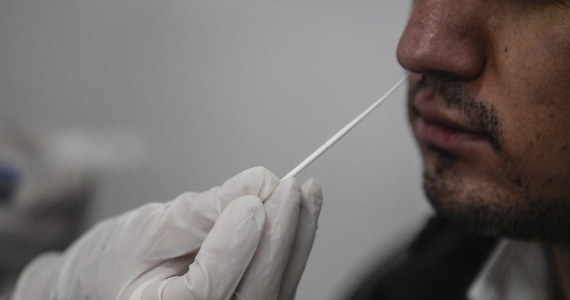It was 110 centimeters long, weighed 28 kilograms, and had a brain capacity similar to that of a modern chimpanzee. In the exhibition held at the Center for Natural Science Education of the Jagiellonian University in Krakow, you can see the reconstruction of Lucy – Neanderthal man 3.2 million years ago. The likeness was created based on an “exceptionally well-preserved” skeleton found in Ethiopia.
A life-sized representation of Lucy joined images of a Neanderthal (Homo neanderthalensis) and a Homo erectus. The exhibition is completed by a modern human family tree, which includes replicas of human skulls.
Read also: They discovered newspapers from the 19th century under the wallpaper. “One describes the plan for the coronation celebrations of Tsar Nicholas II.”
Reconstruction of Lucy in Krakow
Lucy belongs to the species Australopithecus afarensis – a southern ape that inhabited eastern Africa about 3.7 to 1.3 million years ago. Lucy is the most famous representative of this type. She lived 3.2 million years ago. Skeletal fragments were found in 1974 near the village of Hadar in Ethiopia. The name is taken from the then popular Beatles song “Lucy in the Sky with Diamonds”.
“Lucy's well-preserved skeleton has completely reevaluated our knowledge. Exactly 47 bones, described as a 40 percent complete skeleton, have allowed us to understand how this hominin moved, what it looked like, what it ate, and what areas it could have Scientists from the Jagiellonian University explained that “the number of preserved bones allowed us to determine that Lucy's height was only 110 cm and her weight was 28 kg, and her brain capacity was similar to that of a modern chimpanzee.”
Lucy's skeleton had both primitive (ape) and modern (human) features. Neanderthal women, as anthropologists describe them, had short lower limbs and long arms and fingers adapted to an arboreal lifestyle. Despite this, it was able to move freely in an upright position on both limbs, and the structure of its pelvis did not differ significantly from that of humans. The arched feet also indicate that they moved in a manner similar to a human gait.
Read also: More than 150 objects have been entered into the antiquities registry
She died after falling from a tree
She likely died as a result of falling from a tree, because the bones showed signs of fractures and cracks typical of people who fall from a great height.
“Although we still do not know whether Lucy was the direct ancestor of Homo sapiens, the discovery of her remains has significantly expanded our knowledge of the oldest human lineages,” noted experts from the Jagiellonian University.
Read also: Why is it easier for some people to wake up early? Scientists have discovered the secret of early birds
The reconstruction of the Neanderthal woman, as well as the Neanderthal man and the straight man, was prepared by a company from Ostrowiec Šwietokrzeski in consultation with anthropologists.
The exhibition organizers point out that preparing a silicone model is a time-consuming process.
Read also: Discover the “monks’ residence.” “After more than 400 years, the walls of the monastery will see the light again.”
As they describe, the first stage is a precise understanding of the skeletal structure of the reconstructed species, allowing the construction of a steel structure thanks to which the model will maintain a typical stance for a given species. A prototype is made on the internal skeleton made in this way – layers of plasticine and clay are applied in order to reproduce in minute detail the individual's muscles and skin with its wrinkles and folds. The next step is to remove the silicone mold from the model that will be used to make the mold. The molded model consists of several layers of silicone that mimic the skin. The hair is then mounted onto a bare silicone model. This laborious process is carried out with a needle and crochet hook, hair by hair. After that, all that's left is simple retouching and makeup. The sculptor who devoted hundreds of hours of work to every wrinkle in the reconstruction is Ewa Stawiarska.
Main image source: A. Chikaj, A. Pikalski, Jagiellonian University

Echo Richards embodies a personality that is a delightful contradiction: a humble musicaholic who never brags about her expansive knowledge of both classic and contemporary tunes. Infuriatingly modest, one would never know from a mere conversation how deeply entrenched she is in the world of music. This passion seamlessly translates into her problem-solving skills, with Echo often drawing inspiration from melodies and rhythms. A voracious reader, she dives deep into literature, using stories to influence her own hardcore writing. Her spirited advocacy for alcohol isn’t about mere indulgence, but about celebrating life’s poignant moments.









